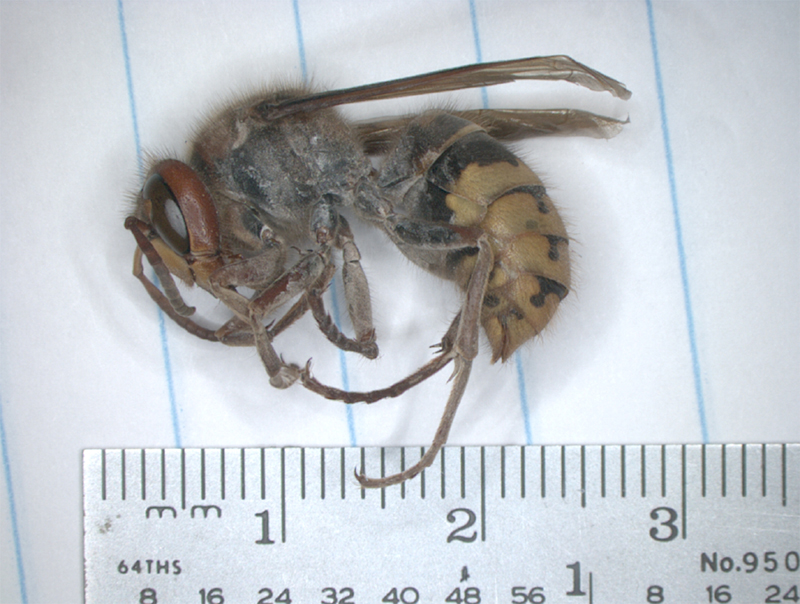picture of the week
April 17, 2023
Yellowjackets on Steroids
Tim Gibb, Insect Diagnostician, Purdue University
I received the following e-mail that, I think, describes the European hornet very nicely. This is the only true hornet found in the United States. It bears black on yellowish-orange markings on its abdomen, very similar to the yellowjackets that we are all familiar with. Sometimes it is called a 'giant hornet' because it is so much larger than our typical yellow jackets (up to 1.5 inches in length). It was introduced into New York in about 1840 and now has spread throughout most of the Eastern states. It rarely builds nests that are free hanging but usually covers the entrance to a cavity or hole with its nest made of coarse, tan colored, paper-like material. Like yellowjackets, only the queen passes the winter and nests are NOT reused in a subsequent year. Mature colonies contain from 300 – 500 workers (occasionally more) and prey mostly on large insects (grasshoppers, flies, bees and yellowjackets). E. hornets are very beneficial and seldom really require controls. Only if their nest is directly in the way of people should they ever be destroyed. As the e-mail suggests, E. hornets also are active at night - unlike other stinging wasps. This complicates treatment timing for these wasps slightly, otherwise, they may be treated for in the same manner as yellowjackets.
 European hornet
European hornet Dear sir:
I'm contacting you in hopes that you can help me identify a large, yellowjacket-like bee I discovered in the Cincinnati, Ohio area. These bees are quite large, well over 1" in length (see photo). They were discovered in the soffiting of a two-story house and the following characteristics were noted about them prior to having the nest exterminated:
· They do not appear to be as observant or aggressive as Bald Faced Hornets, as lawn-mowing and other activities took place 20ft below their nest (thankfully) without anyone being stung.
· They are the most nocturnal of any bees of this type I have ever encountered. Even late in the evening, there would be some flying around the nest entrance. Also, at any time of night, a few of them would immediately come down and buzz around any outside lights that were turned on.
· These were very noisy bees when they flew, creating a very loud buzzing noise. Words like "chainsaw", "weed-whip", and similar terms were used to describe the noise each one would make. They are the noisiest bees I have ever heard.
Can you tell me what they are?
Also take a look at these articles: Seeing Swarms of Honey Bees Is a Good Thing from April 2022 and "Murder" Hornets: Should you panic? Probably Not from the Purdue Landscape Report.

